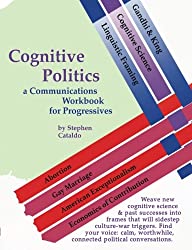Imagine a "Wall."
What is it for? Before you know anything about any particular wall, what comes to mind? What feelings does it evoke? If a wall is used as a metaphor, what is the point of the metaphor?
Linguistic framing expert George Lakoff writes: Democrats must block Trump’s wall of hate.
Lakoff claims that Trump's wall is "a metaphor for racism, nationalism and white supremacy. The wall Trump desires isn’t made of concrete or steel. It’s made of hate." The article ends with a reminder of the racists marching in Charlottesville, carrying torches, one giving the Nazi heil Hitler salute.
I personally don't know any, and don't think there are that many, tiki-torch carrying white supremacists. What I've encountered is people scared of the future, sucked — by their fears, not their hates — back into tribalism including a racist disdain for people they see as not like themselves. With frightening exceptions, typical voters seen as "deplorable" have very little energy or thought for other races: they never take a second glance to wonder if Birtherism might really piss off many African Americans, which is totally obvious if you spend thirty seconds thinking about it — but they don't spend the 30 seconds of actual thought. When they see statistics about or hear stories about police stopping and sometimes shooting innocent black people, they shrug their shoulders and glaze their eyes as if the targets aren't their fellow Americans, as if this is happening many timezones away beyond their influence. This laziness is not anywhere near the same as the active, energetic-hate of the tiki-torch and hiel-Hitler crowd.
A metaphor of a wall, to me, in general, is about security and protection. So Trump's physical wall is evoking security from fears — fears based mostly on a changing economy, that Trump, from the top down, has focused vague fears into fear of other races, cultures and religions. Trump has found scared people — not so much angry racists — but through repetition he frames their fears, calling Mexicans murderers and rapists because scared people are too ready to believe, not because they are already actively, energetically racist.
The Democrats lost the last election over this: believing that "deplorables" were really deeply entrenched in their deplorable choices, instead of realizing that there are millions upon millions of people who are ready to get over their little hates when they feel safe: that if you offer a vision of the future that involves a decent job, only a microscopic few of the racists care about their racism more than their jobs. There are countless people who are mildly racist or susceptible to racist ideas when afraid, whose votes are actually in play — many voted for President Obama.
We keep calling people who resonate with Trump while he listens to their fears — we keep calling them racist. And whether they are or not: in their conscious minds, they know they are not, so they feel insulted. And we lose them completely, even if they initially had mostly agreed with us, issue after issue, because we just called them racist — and they really desire not to be racist, they see it as an insult.
So do we have this backwards?
Trump's wall is aimed at fearful people, willing to turn to anything — yes, including racism — for protection from the future. To defeat him, we have to pull the focus off the border, which is where people's fears are focused, and remind ourselves to be human: more stories of refugees. Don't say "No" to the wall, don't think about the wall. What is our frame?
Where are the "Joe the Plumber" stories of refugees? Why can't I name a refugee family? Know what church they used to pray in, before they had to flee?
Our frame, it seems to me, is simple: the refugees are human beings. We have to pull people back to their hearts, stop joining Trump in focusing on their fears, stop joining Trump in focusing on the divisions. Yes, write our politicians not to spend money on the wall. But the public debate should not focus on the border at all: it should focus on human beings with real stories.
